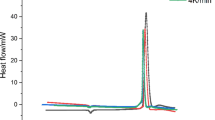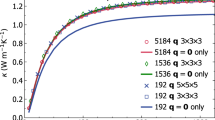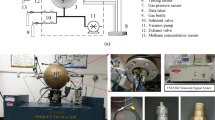Abstract
A THIN platinum wire immersed in flame gases acquires a temperature far greater than that corresponding to the mean molecular translational energy of the gases. The explanation appears to be that an abnormal dissociation exists in flame gases and that the products of the abnormal dissociation combine upon its surface1,2. This perhaps throws light upon the problem of the luminosity of the Welsbach mantle. A mixture of ceria and thoria in the Welsbach mixture proportions is an effective catalyst in the combination of hydrogen and oxygen3, and it seems probable that when a mantle is immersed in flame gases high temperatures are reached at the active centres on its surface.
This is a preview of subscription content, access via your institution
Access options
Subscribe to this journal
Receive 51 print issues and online access
$199.00 per year
only $3.90 per issue
Buy this article
- Purchase on SpringerLink
- Instant access to full article PDF
Prices may be subject to local taxes which are calculated during checkout
Similar content being viewed by others
References
"The Abnormality of Flame Gases", Proc. Inst. Mech. Eng. (in the press).
NATURE, 152, 278 (1943).
Minchin, Trans. Faraday Soc., 35, 163 (1939).
Author information
Authors and Affiliations
Rights and permissions
About this article
Cite this article
DAVID, W. The Welsbach Mantle. Nature 152, 477 (1943). https://doi.org/10.1038/152477c0
Issue date:
DOI: https://doi.org/10.1038/152477c0



